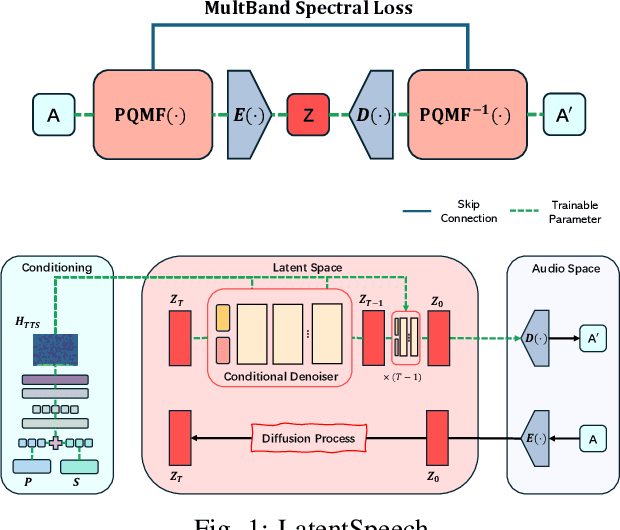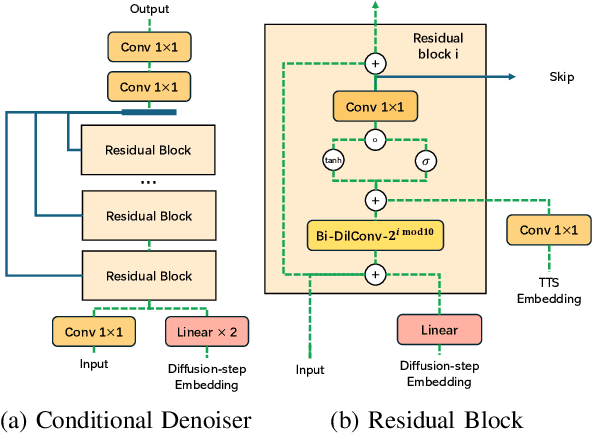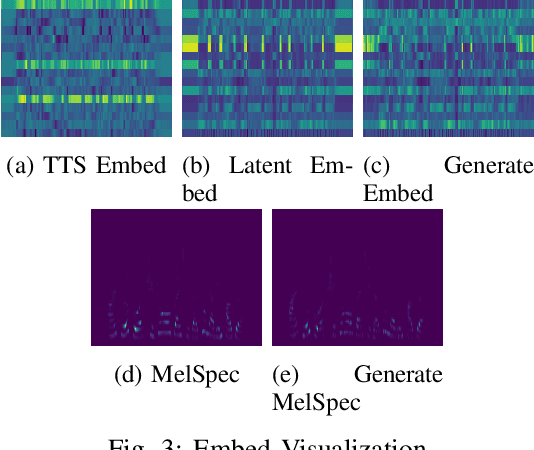Pari Delir Haghighi
Explain Before You Answer: A Survey on Compositional Visual Reasoning
Aug 24, 2025Abstract:Compositional visual reasoning has emerged as a key research frontier in multimodal AI, aiming to endow machines with the human-like ability to decompose visual scenes, ground intermediate concepts, and perform multi-step logical inference. While early surveys focus on monolithic vision-language models or general multimodal reasoning, a dedicated synthesis of the rapidly expanding compositional visual reasoning literature is still missing. We fill this gap with a comprehensive survey spanning 2023 to 2025 that systematically reviews 260+ papers from top venues (CVPR, ICCV, NeurIPS, ICML, ACL, etc.). We first formalize core definitions and describe why compositional approaches offer advantages in cognitive alignment, semantic fidelity, robustness, interpretability, and data efficiency. Next, we trace a five-stage paradigm shift: from prompt-enhanced language-centric pipelines, through tool-enhanced LLMs and tool-enhanced VLMs, to recently minted chain-of-thought reasoning and unified agentic VLMs, highlighting their architectural designs, strengths, and limitations. We then catalog 60+ benchmarks and corresponding metrics that probe compositional visual reasoning along dimensions such as grounding accuracy, chain-of-thought faithfulness, and high-resolution perception. Drawing on these analyses, we distill key insights, identify open challenges (e.g., limitations of LLM-based reasoning, hallucination, a bias toward deductive reasoning, scalable supervision, tool integration, and benchmark limitations), and outline future directions, including world-model integration, human-AI collaborative reasoning, and richer evaluation protocols. By offering a unified taxonomy, historical roadmap, and critical outlook, this survey aims to serve as a foundational reference and inspire the next generation of compositional visual reasoning research.
DWIM: Towards Tool-aware Visual Reasoning via Discrepancy-aware Workflow Generation & Instruct-Masking Tuning
Mar 25, 2025Abstract:Visual reasoning (VR), which is crucial in many fields for enabling human-like visual understanding, remains highly challenging. Recently, compositional visual reasoning approaches, which leverage the reasoning abilities of large language models (LLMs) with integrated tools to solve problems, have shown promise as more effective strategies than end-to-end VR methods. However, these approaches face limitations, as frozen LLMs lack tool awareness in VR, leading to performance bottlenecks. While leveraging LLMs for reasoning is widely used in other domains, they are not directly applicable to VR due to limited training data, imperfect tools that introduce errors and reduce data collection efficiency in VR, and challenging in fine-tuning on noisy workflows. To address these challenges, we propose DWIM: i) Discrepancy-aware training Workflow generation, which assesses tool usage and extracts more viable workflows for training; and ii) Instruct-Masking fine-tuning, which guides the model to only clone effective actions, enabling the generation of more practical solutions. Our experiments demonstrate that DWIM achieves state-of-the-art performance across various VR tasks, exhibiting strong generalization on multiple widely-used datasets.
LatentSpeech: Latent Diffusion for Text-To-Speech Generation
Dec 11, 2024



Abstract:Diffusion-based Generative AI gains significant attention for its superior performance over other generative techniques like Generative Adversarial Networks and Variational Autoencoders. While it has achieved notable advancements in fields such as computer vision and natural language processing, their application in speech generation remains under-explored. Mainstream Text-to-Speech systems primarily map outputs to Mel-Spectrograms in the spectral space, leading to high computational loads due to the sparsity of MelSpecs. To address these limitations, we propose LatentSpeech, a novel TTS generation approach utilizing latent diffusion models. By using latent embeddings as the intermediate representation, LatentSpeech reduces the target dimension to 5% of what is required for MelSpecs, simplifying the processing for the TTS encoder and vocoder and enabling efficient high-quality speech generation. This study marks the first integration of latent diffusion models in TTS, enhancing the accuracy and naturalness of generated speech. Experimental results on benchmark datasets demonstrate that LatentSpeech achieves a 25% improvement in Word Error Rate and a 24% improvement in Mel Cepstral Distortion compared to existing models, with further improvements rising to 49.5% and 26%, respectively, with additional training data. These findings highlight the potential of LatentSpeech to advance the state-of-the-art in TTS technology
AR-Facilitated Safety Inspection and Fall Hazard Detection on Construction Sites
Dec 02, 2024Abstract:Together with industry experts, we are exploring the potential of head-mounted augmented reality to facilitate safety inspections on high-rise construction sites. A particular concern in the industry is inspecting perimeter safety screens on higher levels of construction sites, intended to prevent falls of people and objects. We aim to support workers performing this inspection task by tracking which parts of the safety screens have been inspected. We use machine learning to automatically detect gaps in the perimeter screens that require closer inspection and remediation and to automate reporting. This work-in-progress paper describes the problem, our early progress, concerns around worker privacy, and the possibilities to mitigate these.
HYDRA: A Hyper Agent for Dynamic Compositional Visual Reasoning
Mar 19, 2024



Abstract:Recent advances in visual reasoning (VR), particularly with the aid of Large Vision-Language Models (VLMs), show promise but require access to large-scale datasets and face challenges such as high computational costs and limited generalization capabilities. Compositional visual reasoning approaches have emerged as effective strategies; however, they heavily rely on the commonsense knowledge encoded in Large Language Models (LLMs) to perform planning, reasoning, or both, without considering the effect of their decisions on the visual reasoning process, which can lead to errors or failed procedures. To address these challenges, we introduce HYDRA, a multi-stage dynamic compositional visual reasoning framework designed for reliable and incrementally progressive general reasoning. HYDRA integrates three essential modules: a planner, a Reinforcement Learning (RL) agent serving as a cognitive controller, and a reasoner. The planner and reasoner modules utilize an LLM to generate instruction samples and executable code from the selected instruction, respectively, while the RL agent dynamically interacts with these modules, making high-level decisions on selection of the best instruction sample given information from the historical state stored through a feedback loop. This adaptable design enables HYDRA to adjust its actions based on previous feedback received during the reasoning process, leading to more reliable reasoning outputs and ultimately enhancing its overall effectiveness. Our framework demonstrates state-of-the-art performance in various VR tasks on four different widely-used datasets.
 Add to Chrome
Add to Chrome Add to Firefox
Add to Firefox Add to Edge
Add to Edge